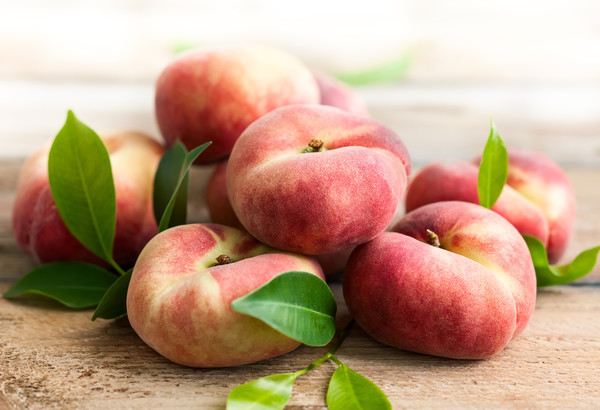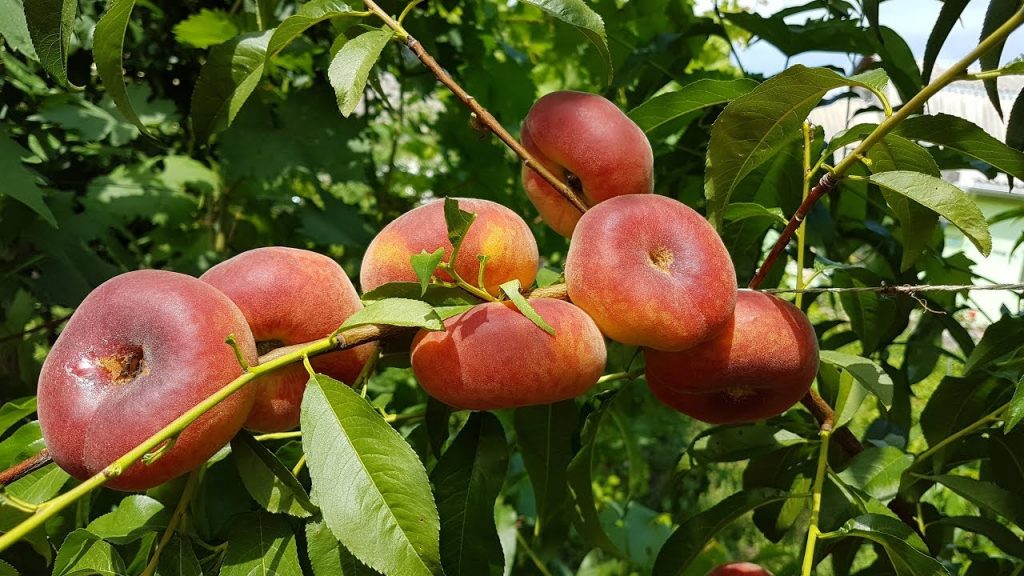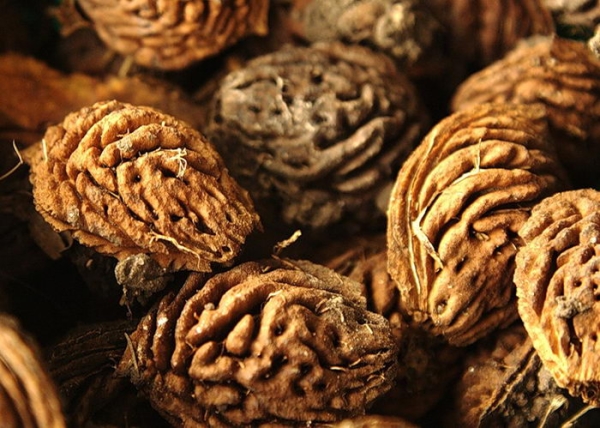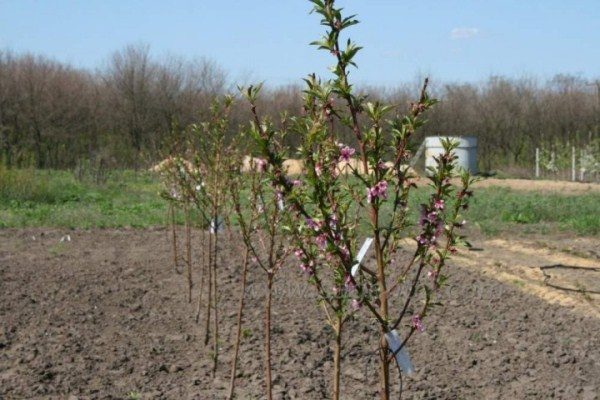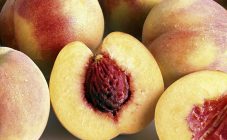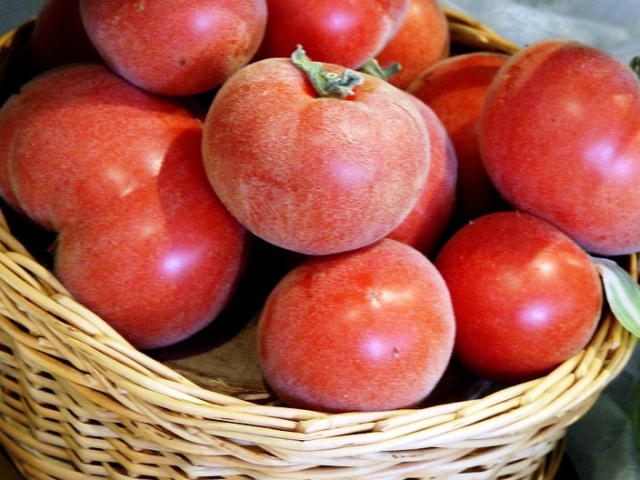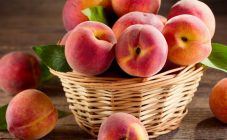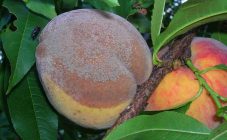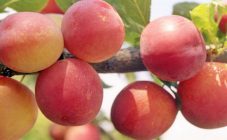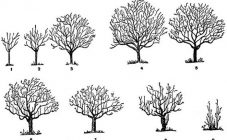Content:
Among the many varieties of peach, there is a flattened peach, the name of which has nothing to do with figs. It is a fig peach, which is a type of common peach. Contrary to the opinion that this variety is a hybrid of a peach and a fig, or it is a peach crossed with a fig, breeders argue that this is not the case. Flat peach has high taste characteristics, juicy fruits with good aroma. The shape of the fruit is similar to a fig - flattened. In Europe, it is called the Paraguay peach or "donut", because if you remove the pit inside the fruit, there will be a void in the middle. The downy characteristic of peaches is less pronounced.
Description of culture
The excellent taste of the fruits, their weight and small stone (about three grams) are increasingly attracting gardeners. Every year the number of people who want to start growing this crop is growing.
Fruit weight reaches 140 grams. The pulp is white in color, sometimes with a slight yellowness. The taste spreads unevenly over the pulp: closer to the peel it is the most intense, the further - less. It is a smooth peach. The flattened shape of the fruit is convenient for packing in boxes and further transportation.
This flat peach (as it is called, described earlier) yields at the end of summer. The trees are very frost-hardy, so frosts and snowy winters are well tolerated and do not affect the yield intensity.
Peach figs, just like ordinary figs, contain the maximum amount of trace elements, vitamins and minerals. Thus, Paraguayan peaches have a positive effect on the human body:
- Strengthens the immune system.
- They normalize metabolic processes.
- Prevents the appearance of neoplasms.
- Help slow down the aging process.
Regular consumption of peaches has the following effects:
- strengthening the immune system;
- slowing down the aging process;
- normalization of the heart rate;
- improving the functioning of the liver, pancreas and kidneys.
Popular varieties
One of the most popular varieties of fig peach is the mid-late Saturn variety. This peach yields a high yield, the fruits ripen early. The variety is resistant to frost, cold weather and rainy weather.
Sweet Ring is an early ripe variety of fig peach. It is noteworthy that the crop can be harvested in the first half of July. The taste of the fruit is very sweet, which makes it popular among buyers.
A variety with rather large fruits up to 200 grams, with excellent fruiting is a columnar fig peach. It is one of the new varieties, suitable for growing in a small area of the garden.
Growing seedlings and seeds
If you follow some agrotechnical rules for planting and growing a fig peach, you can end up with a good fruit tree that will delight you with its harvest every year.
Flattened peach is grown with seedlings, but you can also use seeds. However, if you want to grow a tree from a bone, you will need to be patient, because this type of planting requires more time before harvest.
When deciding to grow a peach from a seedling, it is recommended to approach this process responsibly and with special care. When choosing a seedling, it is necessary to inspect it for the presence of various spots, damage, which indicates the poor condition of the plant. The peach variety must be selected in accordance with the climatic conditions of the territory in which it will grow. The Chinese peach, as it is also called, loves warmth and sun, therefore it takes root well in the southern regions.
The age of a fig peach should not exceed 2 years, otherwise it will be difficult for him to endure a change in environment and soil. It will slowly take root, so the harvest will have to wait longer.
It is best to purchase annual seedlings - there will be no problems with planting and further development of the tree.
Growing peach seeds outdoors is a possible but challenging process. The difficulty lies in the fact that the harvest in this case will have to wait longer. And the taste of the fruit will not be as juicy and rich as those grown from seedlings, they will more likely resemble apricots in size than peaches.
However, fruit trees that have grown from seed have some benefits:
- A tree grown from a seed is most adapted to the weather conditions of the region in which it was planted. From the very beginning, the peach strengthens its roots in the soil, gets used to frost and snow, therefore it becomes hardy and strong;
- The peach tree is immune and resistant to diseases and pests;
- The harvest is sure to be abundant and consistent.
It will be possible to start harvesting only in a couple of years.
The seeds are planted to a depth of 5-6 cm, with a distance of 8-10 cm from each other. It is better to soak them before planting.
If the seed is planted at home, then transplanting the seedling into the open ground after greenhouse conditions will be problematic for the plant itself. The adaptation period will be long, perhaps the seedling will not be able to harden well enough and over time, with the first frost, will die. For this reason, it is customary among gardeners to plant seeds directly into the ground. This procedure is carried out mainly in the fall, after planting, the beds are covered with dry leaves. In the spring, after the past winter, the peaches will begin to sprout, but not all, because natural selection will take place: the strong grow, and the weak die.
In the spring, the sprouted seedlings are watered every day, the plants are fed with liquid mullein. For preventive purposes, Rodomil is used for pest control. Excessive care of seedlings and frequent application of fertilizers to the soil are not recommended. The plant must go through a hardening stage in order to be ready to meet the winter cold.
When the seedlings grow 70 cm, it is necessary to start forming the crown. The lateral branches are cut off and the frozen, dry and diseased ones are removed. With proper care, a peach tree grows up to 1.5 m in autumn.
In the spring, the seedlings are transplanted to a permanent place. Before flowering, some shoots must be pruned to form the skeleton of the future tree.
Planting seedlings
Before you start planting a fig peach, you need to decide on a place to grow this thermophilic crop. In most cases, peaches are fruits that grow mainly in the southern regions, however, thanks to advancing technologies, gardeners living in different areas can grow good trees on their site that bring bountiful harvests.
A place with good lighting, protected from strong winds, is chosen for the plant. Groundwater should not be more than 3 m deep.If the area for planting is damp, swampy and poorly lit, then there is no point in planting a peach here - it will not take root or will not yield a crop. It is best to plant peaches away from other fruit trees, so that they, in turn, do not create shade for such a sun-loving culture.
The Paraguayan peach is planted mainly in spring, sometimes in autumn. The soil is fertilized with mineral fertilizers before planting, it is recommended to dig up the ground. Seedlings are planted in the holes prepared in advance, after carefully straightening the root system. Next, the pit is sprinkled with soil, watered with two or three buckets of water and covered with mulch (rotted manure, fallen leaves, grass).
Watering the peach trees is advisable about once every 2 weeks. For irrigation, settled water is used. 2-3 buckets of liquid are enough for one tree.
Care
For the fig peach, the so-called gray rot is a great danger. Therefore, after planting seedlings, they must be processed, for the purpose of prevention.
To protect against pests, trees must be sprayed with special preparations. To destroy such pests as mycelium or hibernating spores, with the onset of spring, trees are sprayed with a 1% solution of copper sulfate. The spraying process takes place in 4 stages:
- with the onset of spring, after all the snow has melted;
- when buds appear;
- before flowering begins;
- after the end of flowering.
In order for the branches of the tree to be strong and can easily withstand a bountiful harvest, it is necessary to prune the ovaries in the spring.
After harvesting, it is advisable to fertilize the soil in the form of a potassium-phosphorus mixture. This procedure will increase the level of winter hardiness of the crop.
Corrective crown pruning is performed in the spring. The most popular way to form it is the so-called "bowl", there is also an "improved bowl". In both methods, when pruning, 3-4 main branches are left, which grow equally from the lower part of the trunk. However, with the "improved bowl" there is a gap between the branches, measuring 15-20 cm. Such a peach tree skeleton provides maximum access to sunlight, ventilates the crown well and looks spectacular.
In the spring, it is necessary to get rid of diseased, dry or frozen branches after a cold winter.
Possible growing difficulties
Due to the high immunity of the fig peach to cold weather, it is in demand among gardeners for planting. The fig peach tree, subject to the above recommendations, does not have any difficulties in growing. The main thing is to choose a good site with good access to the sun's rays, to water, prune and other activities necessary for the plant in a timely manner.
